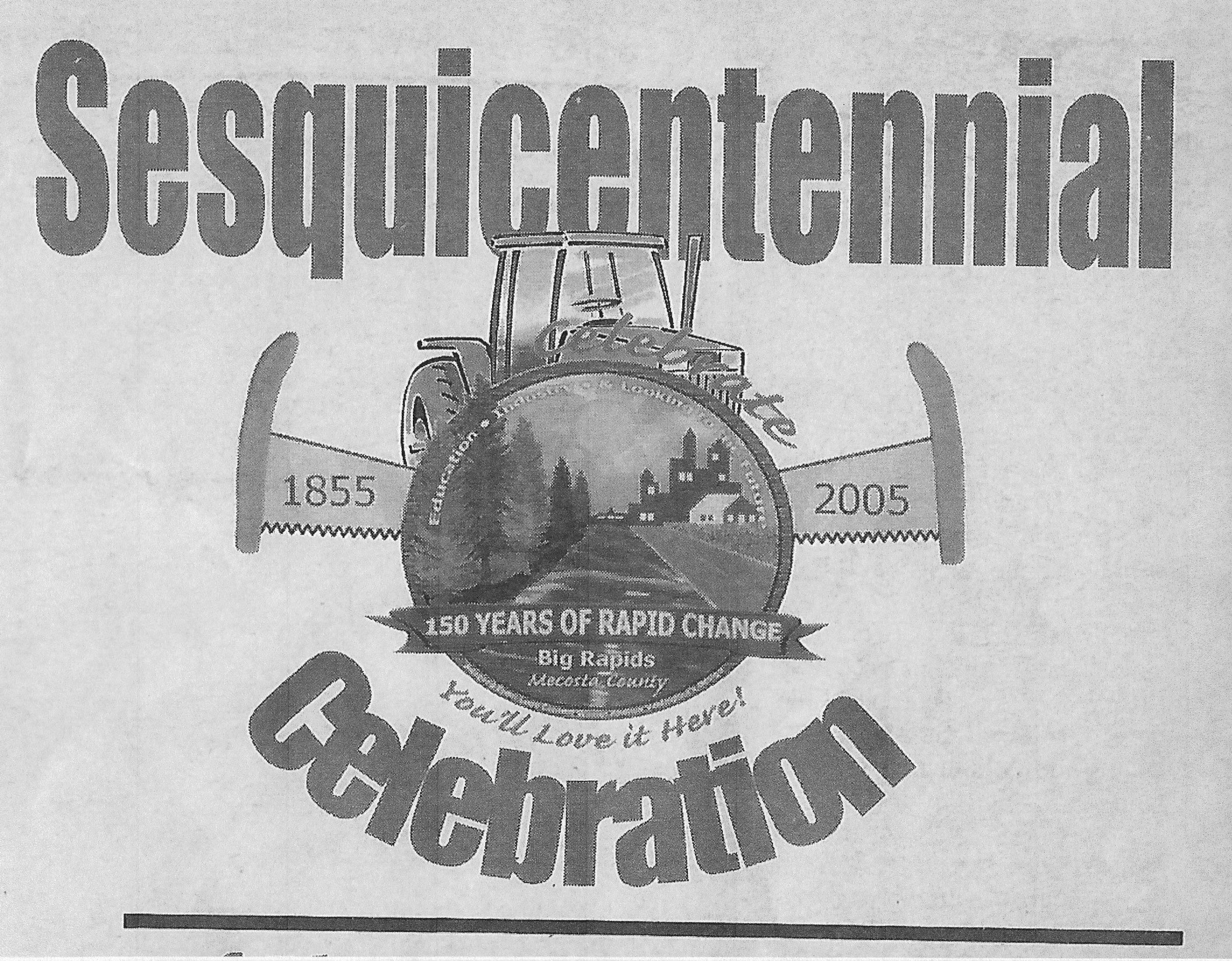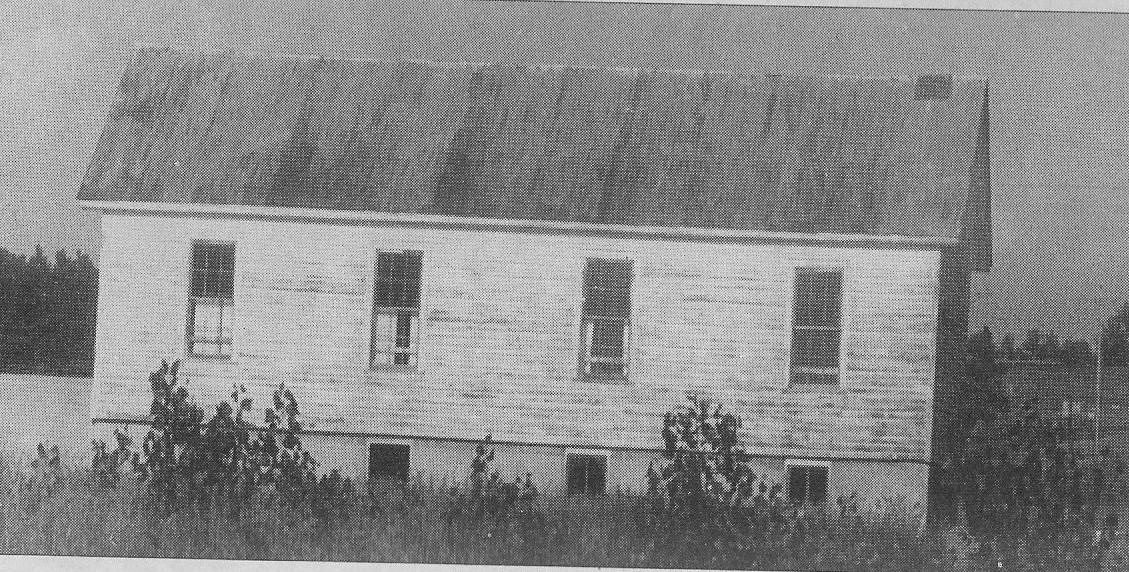
Part I - Agriculture, a supplement to the Big Rapids Pioneer Newspaper. Used with permission.
FIRST FARM
FOREST LAND OF YESTERYEARS CONVERTED TO CROPLANDS OF TODAY
Leah Nixon, Pioneer Staff Writer

John Davis was the first permanent settlerr in Mecosta County when he settled on 80 acres in the vicinity of the present day intersection of 8 Mile Road and Old State Road in 1851. Davis also recognized as the first farmer in the county and constructed the first frame barn on his property. His home also served as overnight lodging for early travelers of the Old State Road. Many years later a Grange Hall was built on the property he once owned in the same location as the present-day Old Grange Store. (Pioneer file photo)
Gone are the days of subsistence farming - growing enough food to feed your family and relatives. Now are the days of super farms, places that supply food for at least 100 people.
How else has the face of farming changed in the last century? Technology, for one, brought the tractor to farms across America and education helped growers produce more.
The evolving status of growers and their products was even seen close to hime as farming always has been an integral part of Mecosta County history and despite the fact Mom and Pop operations have gone by the wayside, farming still is a viable part of this Mid-Michigan county.
According to the 2002 Census of Agriculture, there are 119,777 acres of land farmed within Mecosta County, with 794 farms accounting for nearly $13.5 million in crop sales and $171.1 million in livestock sales.
In the United States, only 2 percent of people live on farms compared to 30 percent in 1920. Michigan State University County Extension Agent Thomas Rorabaugh said. There are only 1.9 million farms today versus 7 million 75 years ago.
"Early farming efforts 100 years ago were full-time family operations....this is similar in the Amish farns in Mecosta County today,"Rorabaugh said. "In contrast, today's farmer feeds 124 other people.
The 80 plus Amish farms within the county are reminisent of traditional farms in the sense thay have a few cows and pigs, theyuse horses to plow, plant and harvest; and they grow a large garden for their family, he said. Traditional farms, even into the 1920's and 30's. still were farmed with horses, as small tractors and mechanical harvesters were becoming popular.
These technological advances had a great impact on changing livelihood. allowing farmers to grow more food. Other advances, including crop and lavestock research, resulted in new hybrids, improved genetics and the resolution of plant disease problems, he added.
Probably the biggest we've had is MSU and research people -- with an increase in technology, there was an increase in crops, said Dan Hatfield, who who lives on a centennial farm north and east of Remus.
'
Following in the footsteps of his father and grandfather, Hatfield and his wife, Edna, run a dairy farm, milking about 100 cows a day. Their oldest son also helps with the operation.
"The agricultural population used to live on a 40 acre farm and they had a few milk cows ... it progressed from there," Hatfield said.
Hybrid crops helped increase production from the 1920's through the 1950's and the use of chemicals to control disease, pests and weeds kept the ball rolling through the 1960's to the present, Rarabaugh said.
From the late '50's onward research has brought an ever-increasing expansion of knowledge which has dramatically affected the rural landscape," he said. "As yields increased and technology reduced the time requirement of production tasks, farmers could farm more land and grow more crops, resulting in fewer farmers producing more."
This also had farmers move from growing clover, corn, hay and oats for livestock to producing chipping potatoes for potato chips, seed corn, dry beans, field corn, alfalfaw, hay and rye, as well as soybeans, wheat and oats.
Return to Home Page


